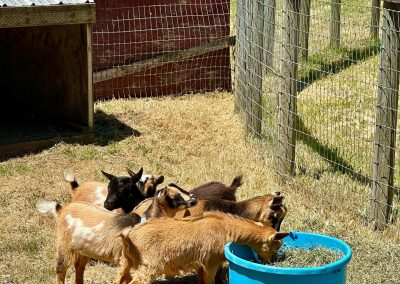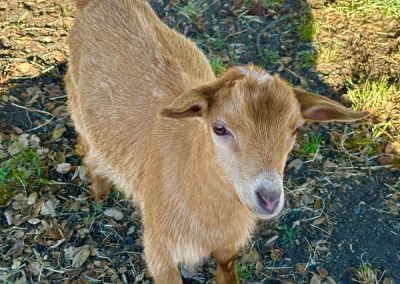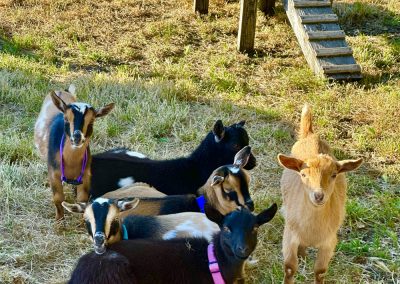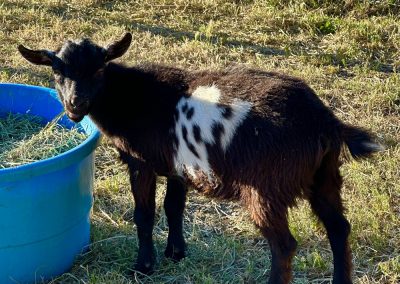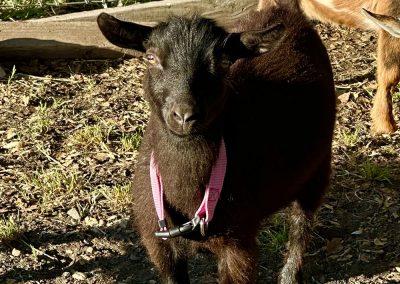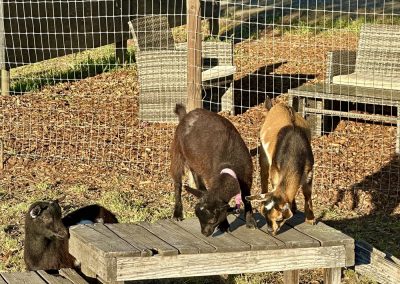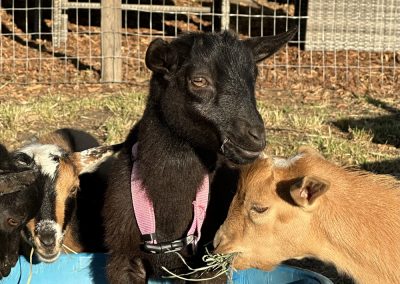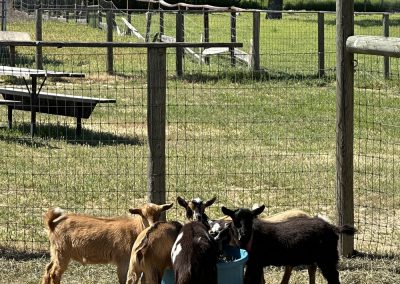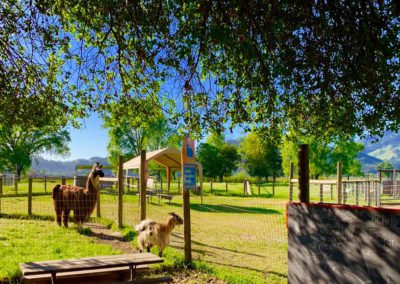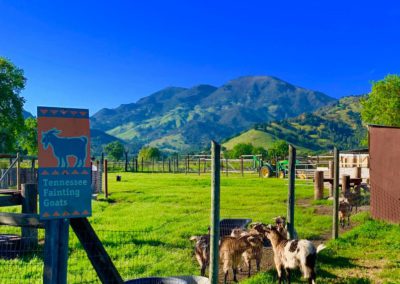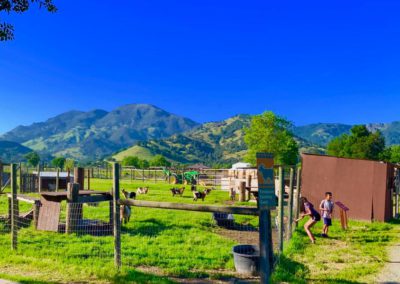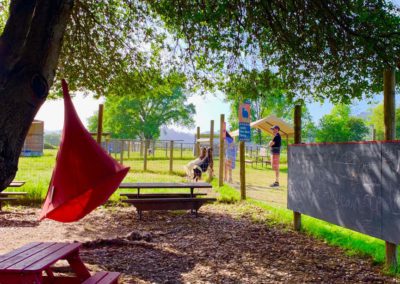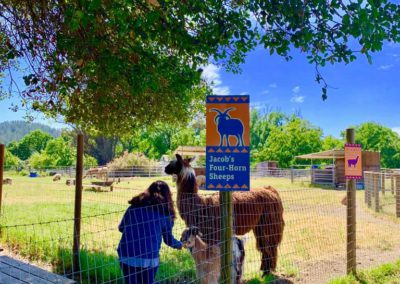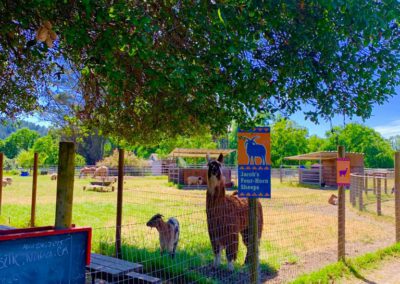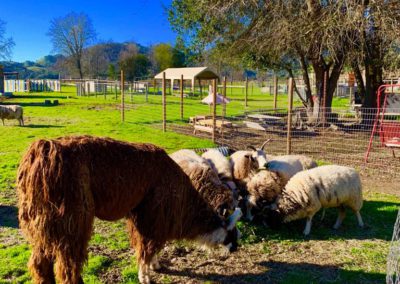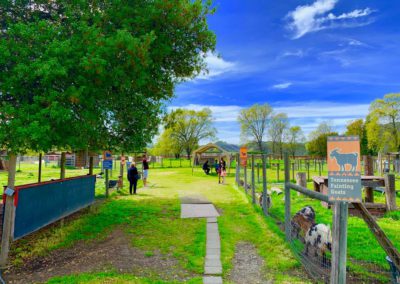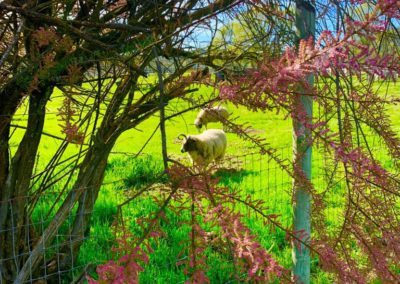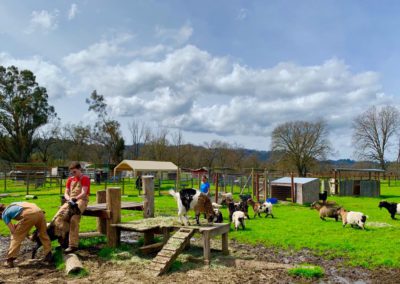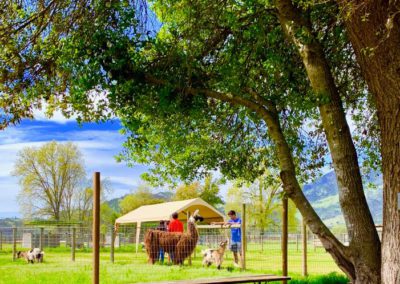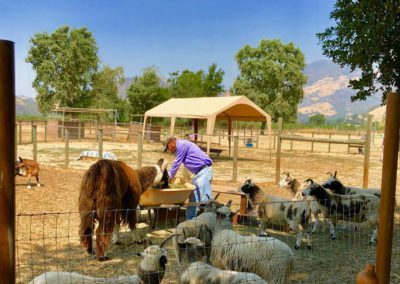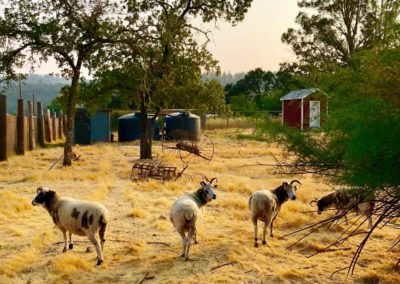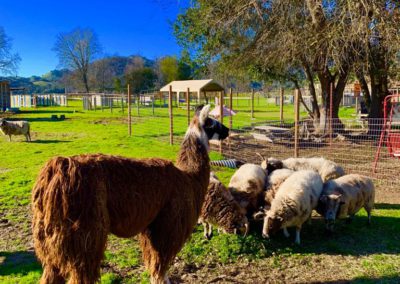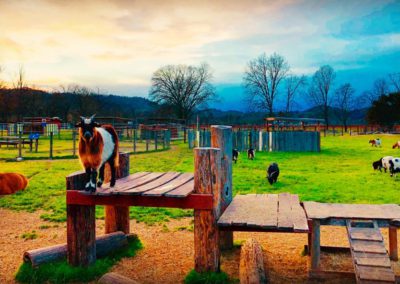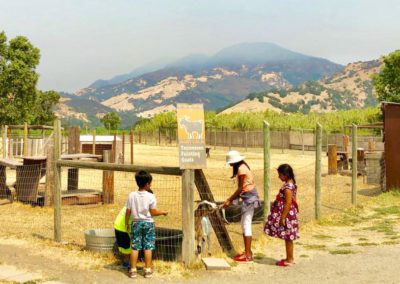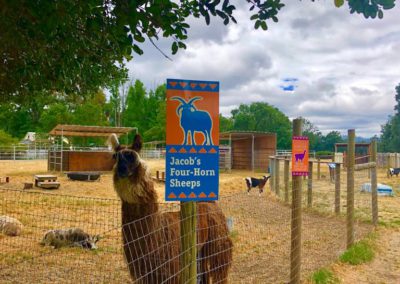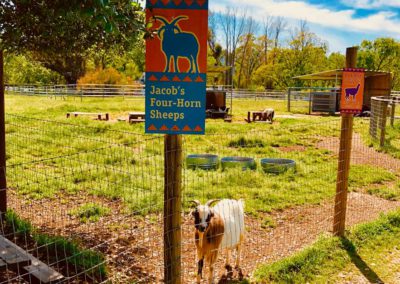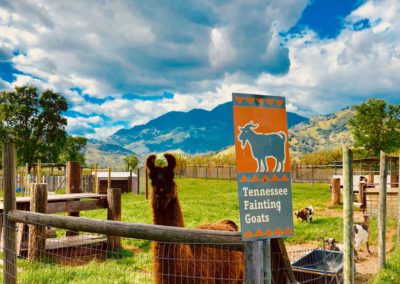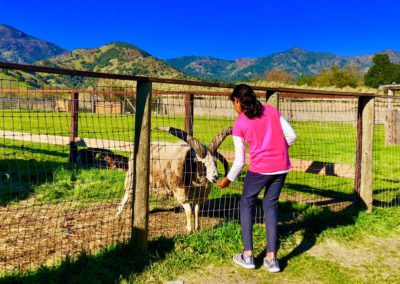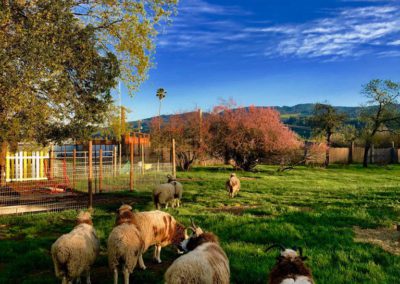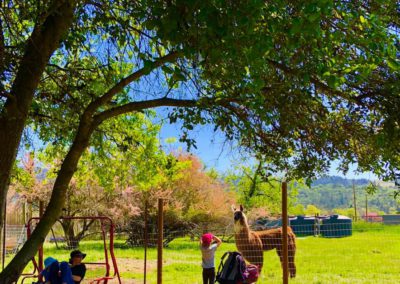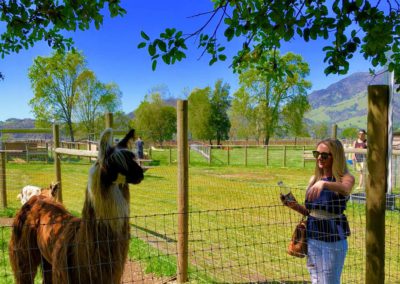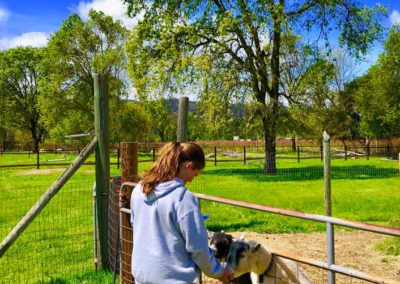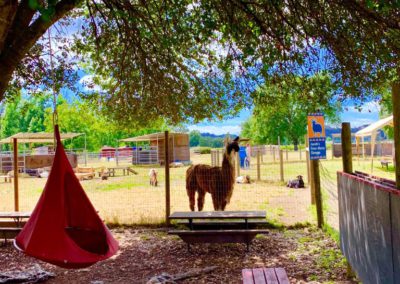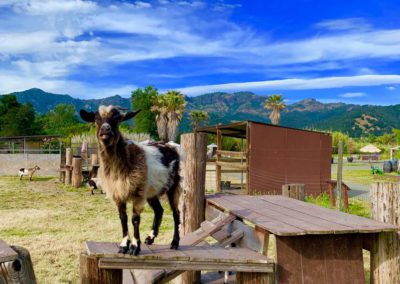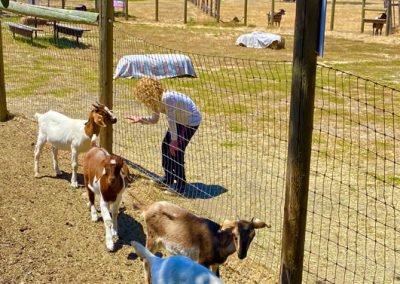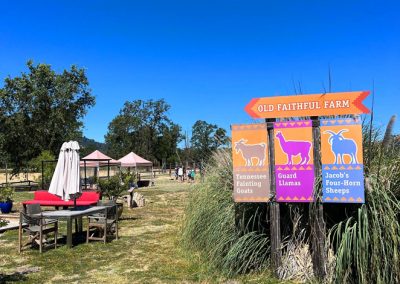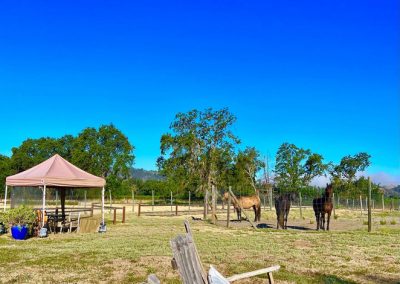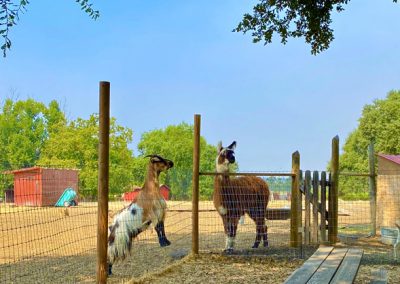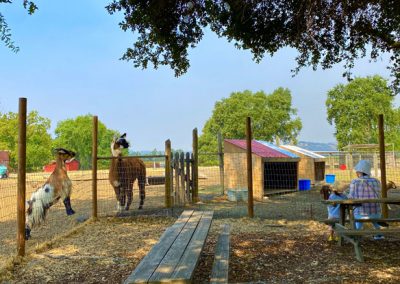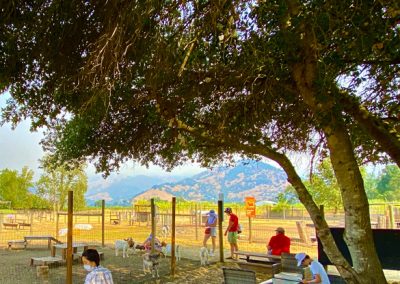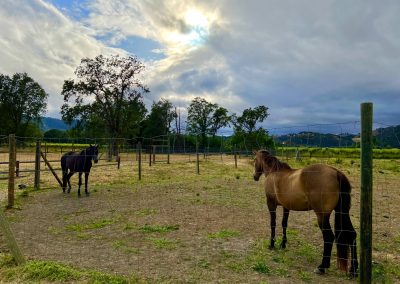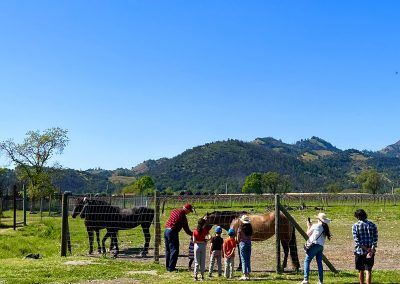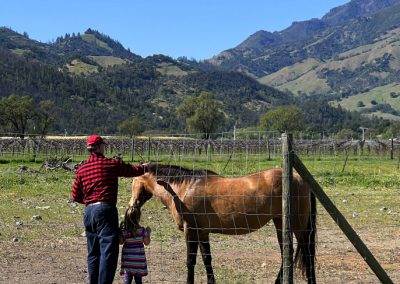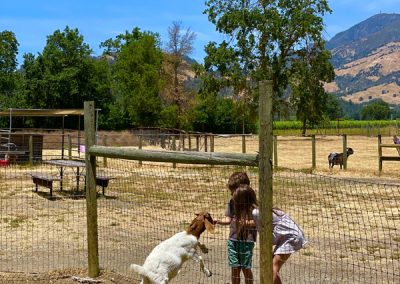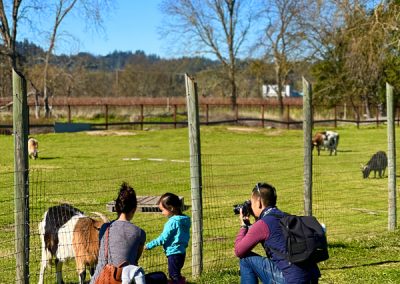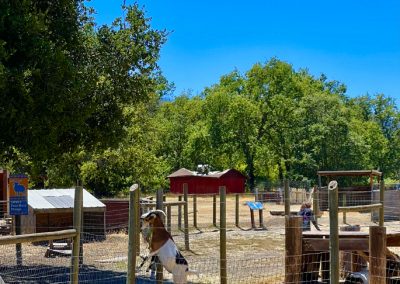Animal Farm
Currently, we have the Nigerian Dwarf goats, Alpaca and horses.
Our farm currently features the Nigerian Dwarf goats, Alpaca and horses. In the past, Old Faithful housed the famous Tennessee Fainting Goats, Jacob’s Four-Horn Sheep, Cameroon Pygmy Goats and Guard Llamas – and we often have new arrivals!
Below, you will find some information about our previous four legged friends as well as the Nigerian Dwarf goats.
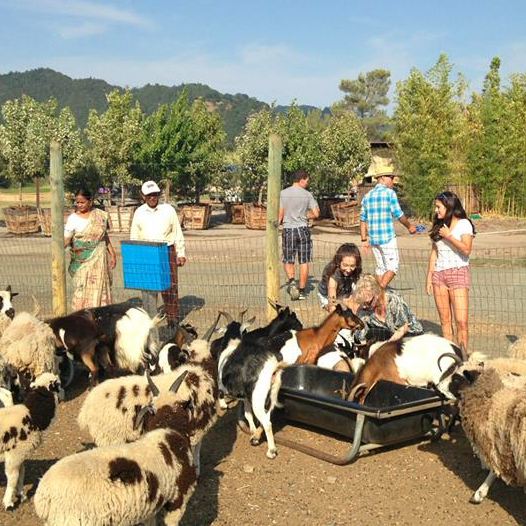
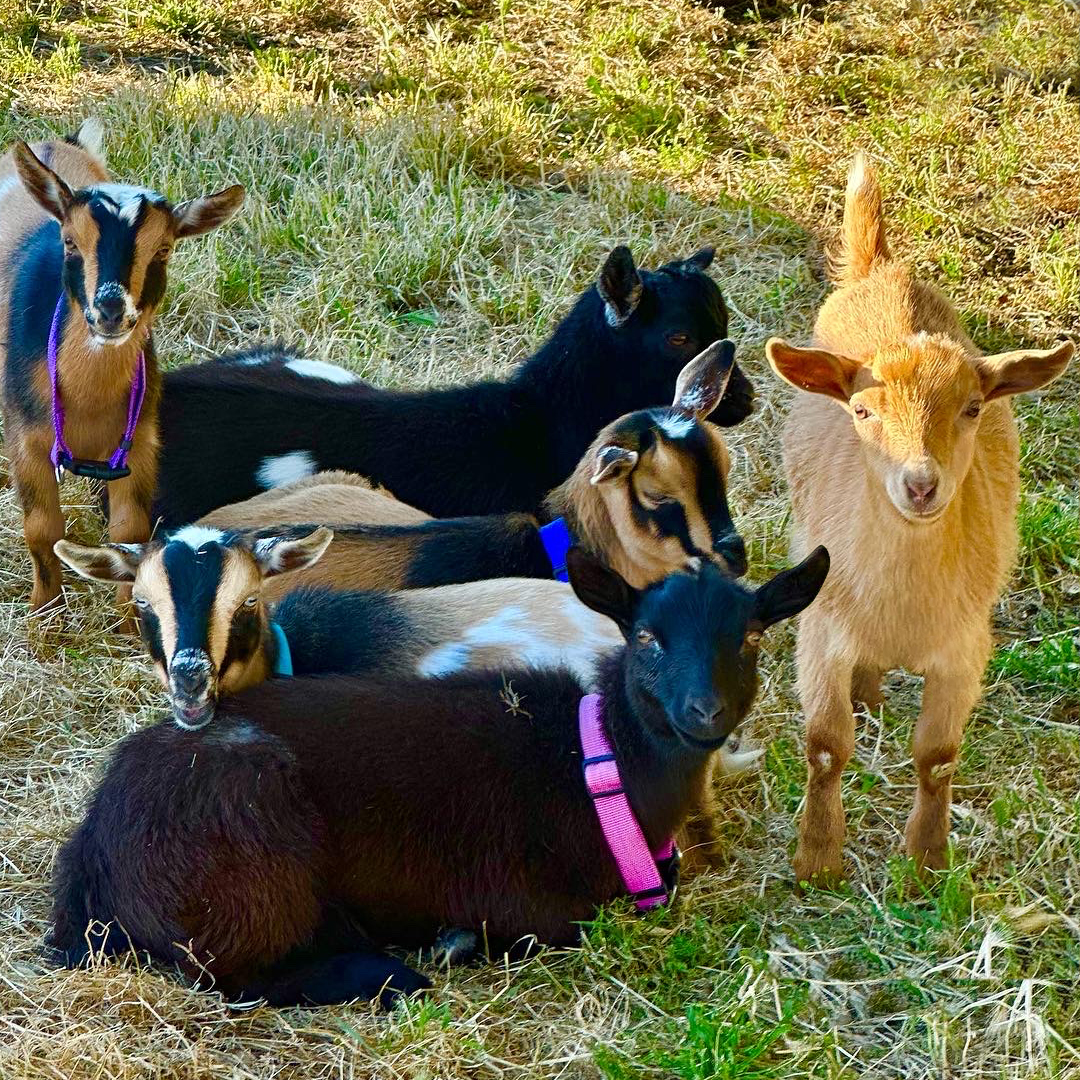
Nigerian Dwarf Goats
The Nigerian Dwarf is an American breed of dwarf goat. It derives from the West African Dwarf group of breeds of West Africa. It was at first reared as a show breed and companion animal; selection was for appearance and for docility. It was later found to be suitable for small-scale dairy production, and some breeding was directed towards dairy qualities. Average milk yield of dairy stock is 750 lb (340 kg) per year. Lactation usually lasts for about ten months. The milk is high in butterfat and protein, is suitable for making cheese and butter.
The Nigerian Dwarf is small but well-proportioned; its conformation resembles that of larger dairy goats. It may be horned or naturally hornless. The coat is fine and fairly short, and may be of any color, or multicolored.
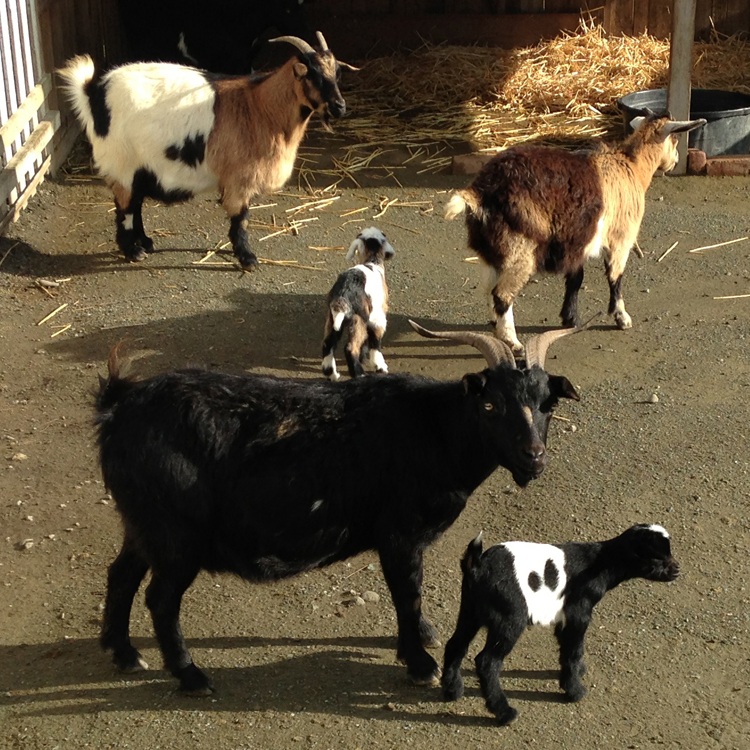
Tennessee Fainting Goats
A distinctly American breed, “fainting goats” have an obscure origin. Sometime during the 1880’s, a transient farm worker – thought to have been from Nova Scotia, Canada – brought his goats to Marshall County, Tennessee. After having spent many years in the area, the transient farm worker left his goats behind with another farmer to breed. After much research, only recently new information suggests that original goats that shared the breed may have come from the mountainous areas of Europe.
Why do these goats faint?
Myotonia Congenita is the medical term to describe stiffening; this simply means that the condition is inherited from prior generations and is no longer considered a defect. Myotonia occurs in the muscle fiber and not the central nervous system. Myotonia has been observed in dogs (chow chows), mice, quarter horses, tumbler pigeons, sheep and humans. So come and learn more about this and our goats!
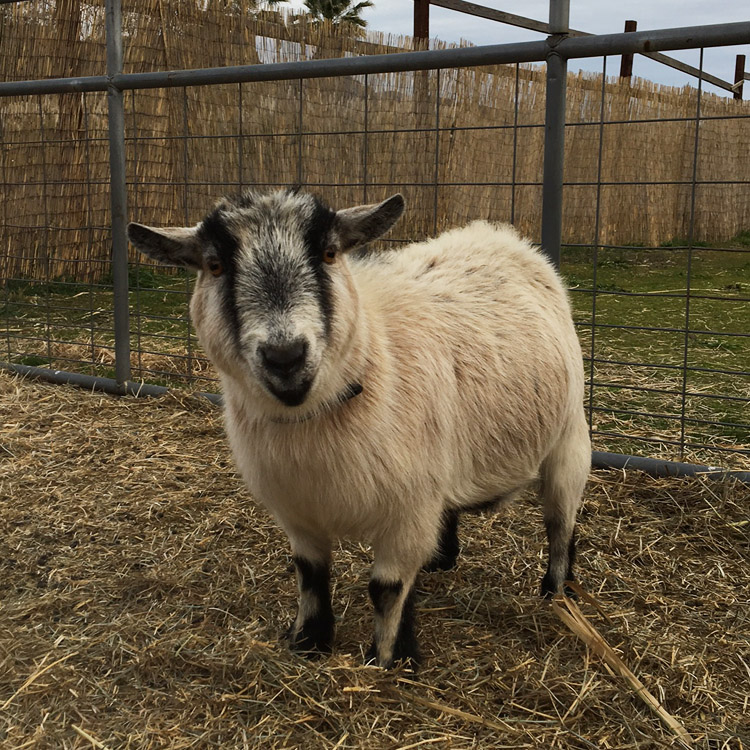
Cameroon Pygmy Goat
Also known as the Cameroon Dwarf Goat, the Pygmy Goat originated in the Cameroon Valley of West Africa. They were transported to the U.S.A. in the 1950s where they were housed in zoos and used for animal research. Over time, the popularity of these miniature goats grew. Private breeders acquired Pygmy Goats and began selling them to families as domestic pets.
Pygmy Goats are admired for their unique size and structure. They are smaller than most goats. The features of a Pygmy Goat are what make them attractive pets. They are not used much for agricultural purposes. However, they are used for milk production.

Jacob’s Four-Horn Sheep
The most distinguishing features of the Jacob are their four horns, although they may have as few as two or as many as six. Both sexes are always horned, and the rams tend to have larger and impressive horns. Four-horned rams have two vertical center horns which may be two or more feet in length, and two smaller side horns, which grow down along the sides of the head.
Each Jacob has distinctive markings that enable the shepherd to identify specific sheep from a distance. The skin beneath the white fleece is pink, while the skin beneath colored spots is darkly pigmented.
Jacob’s have a medium grade fleece and no outer coat – essentially the fleece is light, soft, springy and open, with little lanolin (grease). This wool has a high luster and is highly sought after by hand spinners if it is free of hemp. They are shorn once a year, most often in the springtime.
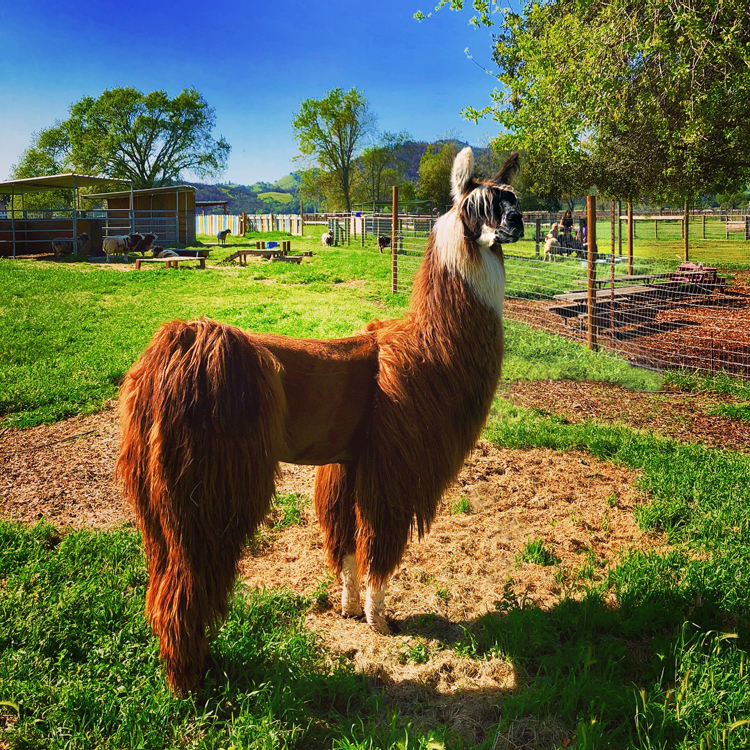
Guard Llamas
Llamas appear to have originated from the central plains of North America about 40 million years ago. They migrated to South America about 3 million years ago. Llamas are native to the South American Andes of Peru, Bolivia & Chile. Introduced to North America in the late 1800s, llamas are one of the oldest domesticated animals in America.
In North America, since the 1980s, llamas have been used as livestock guards in areas of the country where larger predators, such as the coyote, are prevalent. Typically a single castrated male is used for this purpose.
Llamas can survive by eating many different kinds of plants, and they need little water – making them durable and dependable even in sparse mountainous terrain.

PHONE:
(707) 942-6463
EMAIL:
info@oldfaithfulgeyser.com
ADDRESS:
1299 Tubbs Lane, Calistoga, CA 94515
Come On In!
Open 7-Days a Week
Sunday-Friday:
9:00 am - 6:00 pm
Saturday:
9:00 am - 7:00 pm
Quick Links
Admission & Hours
Accessibility
Related Links
FAQs
Job Opportunities
Legal Notices
In the Media
Sign Up!
Plan Your Event

